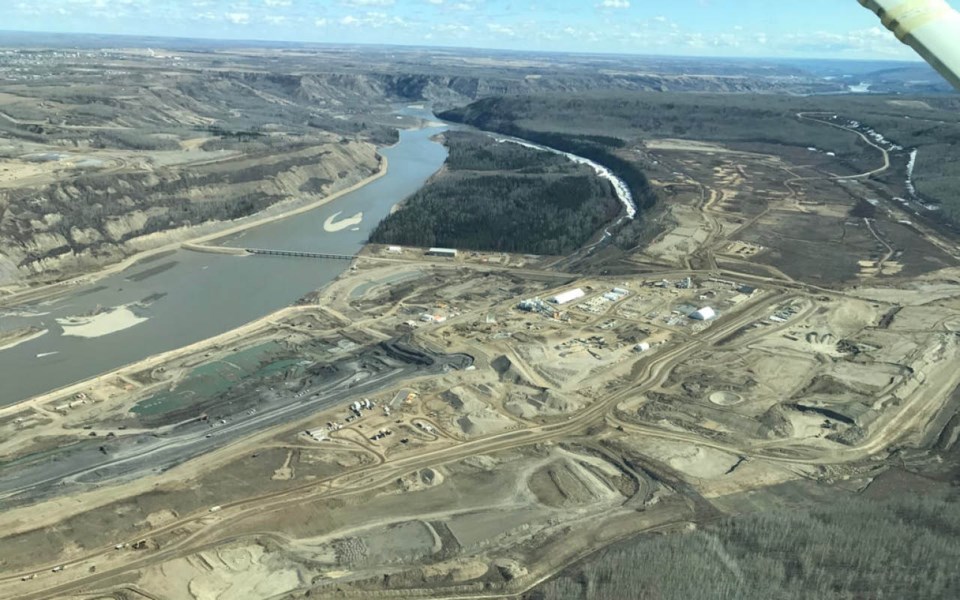Much has been said by various environmental advocacy groups about the "historic opportunity" on offer from the province's NDP government to reform B.C.'s broken, proponent-driven (and ergo, terribly abused) environmental review system. West Coast Environmental Law's recent position paper, "Why it's Time to Reform Environmental Assessment in British Columbia," is reasonably short at less than 25 pages, but does a great job of laying out the issues for everyone, providing examples and perspectives on each from engaged citizens.
The report outlines six key problematic areas within B.C.'s current EA process. Reforming these will require your (i.e. public) input, so they're worth listing and reviewing:
1. B.C.'s environmental assessment regime is allowing cumulative effects to harm lands, waters and communities.
This is the elephant that few know is actually in the room: on a one-by-one basis, many projects are approved because their minimal impacts are considered acceptable in a particular economic trade-off scenario. However, when numerous projects with similar impacts are approved over time, their cumulative impact on ecosystems, indigenous territories and regional communities are seldom considered because: a) there's neither legal framework nor capacity to track it; and b) were this even possible, no requirement to incorporate results in decision-making and no government position with direct responsibility.
"Ecosystems and human communities... are subject to a diverse array of activities, decisions and other factors that add up over time, the full impacts of which could never be meaningfully assessed and managed on a project-by-project (or even industry-by-industry) basis. Interconnected values like water, wide-ranging species such as salmon, and large-scale impacts such as climate change link together in complex ways that simply don't fit into the silo of a single project or permit."
An example is the Elk Valley in southeastern B.C., where cumulative effects of numerous coal mining operations include a fractured landscape, declining water quality (and fish habitat), and wildlife impacts like a 40 per cent reduction in grizzly populations. In Rumsfeldian logic, cumulative effects fit the "known unknown" category, a nebulous state whose very nature draws weak public engagement and easy dismissal from proponents who can claim to have considered "all factors" despite no one knowing what those factors actually are.
2. BC's environmental assessment regime lacks transparency, accountability and credibility.
There's little to add here except that low public engagement is an emergent property of government opacity and lack of accountability: you can't challenge what you don't know about. A couple of recent examples include Taseko's New Prosperity Mine and BC Hydro's Site C dam.
3. Decision-making in BC's environmental assessment regime is not based on ensuring sustainability.
B.C.'s EA process currently has no substantive objectives to aim toward. Sustainability would be an obvious — and desirable — one, both as general principle, and in particular for First Nations communities dependent on sustenance from a particular land/water base. Which segues naturally to the next point.
4. BC's environmental assessment regime does not recognize Indigenous jurisdiction or meet United Nations Declaration on the Rights of Indigenous Peoples (UNDRIP) standards.
With the current EA act silent on important aspects of First Nations' involvement, this point also relates to those listed prior. The longstanding paternalistic and colonial relationship between the Crown and First Nations cannot be reset without this provision. "Unfortunately, BC's current environmental assessment regime does not reflect the role of Indigenous nations as decision-makers in their territories, and as such it acts as an obstacle to implementation of UNDRIP and respectful recognition of Indigenous rights, title and jurisdiction."
5. BC's environmental assessment regime fails to meaningfully engage and inform the public.
As one can read into the other points, the current EA process fails (perhaps epically, in popular parlance) to "enable or facilitate meaningful participation." Public input into reforming the process now will ensure we have a voice in the future.
6. BC's environmental assessment regime does not ensure coordination and collaboration among jurisdictions.
What may seem an officious footnote is actually a serious issue. Coordination and collaboration can be time-and-money-savers for all concerned. In the cautionary New Prosperity Mine example, disconnected provincial and federal assessments resulted in opposite conclusions and a mess of litigation, highlighting the need to facilitate and prioritize collaborative assessment among all relevant jurisdictions.
Leslie Anthony is a science/environment writer and author who holds a doctorate in reversing political spin.




